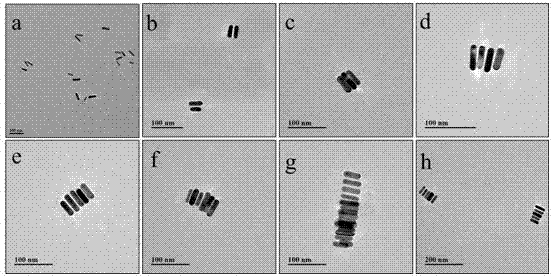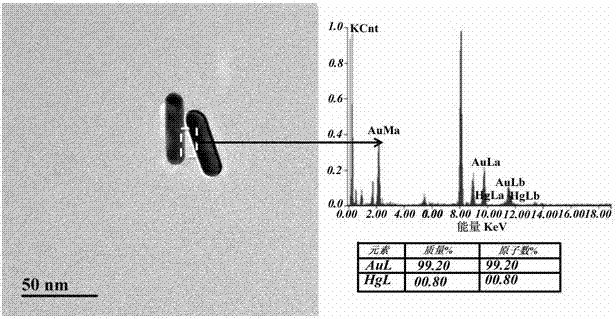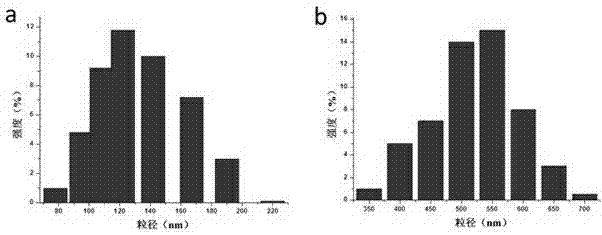Method for manufacturing plasma chiral ligand sensor for mercury ions
An aptamer sensor, plasma technology, applied in the field of analytical chemistry technology and food safety, to achieve the effect of simple construction
- Summary
- Abstract
- Description
- Claims
- Application Information
AI Technical Summary
Problems solved by technology
Method used
Image
Examples
Embodiment Construction
[0035] (1) Synthesis of gold nanorods
[0036] Gold nanorods with an aspect ratio of about 3.0 were synthesized according to the method of the patent "A Preparation Method of Self-Assembled Materials with Surface-Enhanced Raman Activity" (Patent No.: ZL 201010605799.9). The simple steps are as follows:
[0037] ① Synthesis of seed crystals: Add 0.1 mL of pre-configured 2 g / L tetrachloroauric acid trihydrate to 1 mL of 0.2 M cetyltrimethylammonium bromide solution at 28 °C. At this time, The color of the solution changed from colorless to yellowish brown. Then add 0.12 mL of newly prepared 0.01 M sodium borohydride solution to the above mixed system and stir rapidly for 2 min. The color of the solution changed from yellowish brown to light brown. Put the above-mentioned synthesized seed crystal into a water bath at 28°C and let it stand for 30 minutes to react, so that the sodium borohydride that does not fully participate in the synthesis of the seed crystal is completely c...
PUM
 Login to View More
Login to View More Abstract
Description
Claims
Application Information
 Login to View More
Login to View More - R&D
- Intellectual Property
- Life Sciences
- Materials
- Tech Scout
- Unparalleled Data Quality
- Higher Quality Content
- 60% Fewer Hallucinations
Browse by: Latest US Patents, China's latest patents, Technical Efficacy Thesaurus, Application Domain, Technology Topic, Popular Technical Reports.
© 2025 PatSnap. All rights reserved.Legal|Privacy policy|Modern Slavery Act Transparency Statement|Sitemap|About US| Contact US: help@patsnap.com



